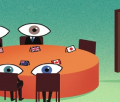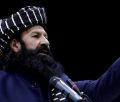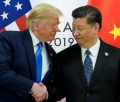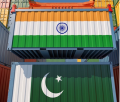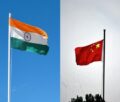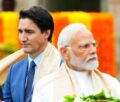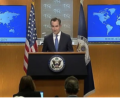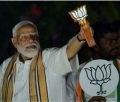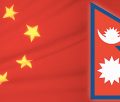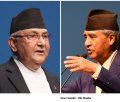Deng Doctrine continues to influence Sino-American ties

Dalai Lama’s low key White House visit and the muted reaction from Beijing show that the Sino-American relations are now settled down to the Asian Marriage mould where the partners live together despite a keen desire for divorce.
The Democratic President, who is being greeted by ‘Nobama’ slogans these days, has taken extra care not to rudely ruffle the Beijing feathers. He kept aside his penchant for fanfare. There was no photo ops to the media either. He met the India exiled Tibetan leader in the Map Room and not in the Oval Office.
On his part, the Dalai Lama (74), was ‘very happy’ with the hour-long session. And Barak Obama, who became the fourth US President since 1991 to ‘receive’ the Tibetan spiritual leader, was happy to extend strong support to the Tibet – to preserve its identity and to protect human rights there.
This is for the second time the US was testing the China waters in recent weeks – in January it announced sale of $6.4 billion worth weapons to Taiwan. Though US envoy Jon Huntsman was summoned to the Foreign Office in Beijing, he was delivered no threat of retaliation of any kind. Nor was there a mention of the bitter acrimony over issues that range from trade, Iran’s nuclear ambitions and dollar bonds to Google censorship.
White House spokesman Robert Gibbs said: ‘ we think we have a mature relationship with the Chinese that we can agree on mutual interests, but also have a mature enough relationship that we know the two countries are not always going to agree on everything’.
 Gibbs speak echoes the realism Deng Xiaoping, the unorthodox Chinese leader, had injected into the US-China relations years ago. ‘The ties with Washington’, he was quoted as saying famously, ‘are not going to be exceedingly better or exceedingly worse’.
Gibbs speak echoes the realism Deng Xiaoping, the unorthodox Chinese leader, had injected into the US-China relations years ago. ‘The ties with Washington’, he was quoted as saying famously, ‘are not going to be exceedingly better or exceedingly worse’.
That realism has come to guide mutuality of interests is evident by the developments in the run up to Thursday Feb 18 meeting at the White House. For instance, China allowed American aircraft carrier, USS Nimitz to dock in Hong Kong on Thursday itself, and thus belied concerns that the visit would be stopped in the light of recent tensions. China is known to block entry to US vessels during times of tension.`
China and the United States are eager to preserve their relations, notwithstanding their public postures. As John Pomfret points out in the Washington Post, China compiled with a U.S. request to resume talks with representatives of the Tibetan leader last month. The talks lasted five days; while the discussions remained inconclusive, Beijing announced a $ 60 billion development package for Tibet. On its part, the Obama administration did not lodge an official protest over La’ affaire Google though at the very outset it declared that it would.
Security specialists hold the view that the roots of Sino-American tensions are in the economic and financial interdependency which has been accentuated with the dollar meltdown in 2008. Slow down of the US economy will hit the Chinese producers since the US is their single largest customer absorbing goods and services worth $220 billion a year (2009 data). For the United States, China is the third largest market that imported $77.4 billion goods last year.
With trade surplus in its favour, Chinese forex reserves reached $ 2.39 trillion mark and one third of these funds are invested in US Treasury debt. This is a move guided as always by mutuality of interest – With infusion of funds, the US Treasury could maintain low interest rate regime, which encourages consumption of Chinese goods.
A Beijing date lined Associated Press despatch by Joe McDonald said the true size of Chinese holdings of US government debt is bigger than reported; it is obscured because China also buys anonymously through banks in Britain, Switzerland, and elsewhere. Such investments may be growing. The flip-side of the deal is that China treats its reserves as a state secret but analysts estimate two-thirds are in US dollar-denominated assets while the rest are mostly in Euros and Yen.
Not that there are no public spats over economic issues but these are choreographed for a purpose – domestic as well as international. Also to arm twist each other in whatever way possible. In this game, quite too often, Washington is the first mover but Beijing has the last laugh though it has a very limited turf space in matters economic.
Last September, the Obama administration hiked the tyre prices and indicated its readiness to invoke a 2001 American law that facilitated China’s entry into the World Trade Organisation (WTO) to create tariff barriers for imports from China. These provocations did not help President Obama. And his much hyped visit to Beijing three months later denied him any talking points on return home. As economists note the visit once again highlighted that the lone surviving Marxist State with capitalist trappings underwrites the economy of the Global Cop.
There are two other areas of Sino-American ties, which generally don’t receive media attention.
One relates to the ineffectiveness of US nuclear trade sanctions on Chinese companies. Second relates to the bravado displayed by the Chinese to cover their discomfiture in terms military and diplomatic.
The Wisconsin Project on Nuclear Arms Control, a Washington based think tank, studied the US- China nuclear business. Its conclusion: US is not very serious of the non-proliferation related sanctions on Chinese companies like China Precision Machinery Import and Export Corporation (CPMIEC) and LIMMT Economic and Trade Company Ltd. While CPMIEC made nearly 300 shipments to as many as 42 American companies since 2006, LIMMT is merrily routing its exports through subsidiaries since 2004. All this makes a mockery of sanctions.
The US has been looking towards China for help in checking the nuclear ambitions of Iran. Given its dependence on Iran for its energy security, Beijing is in no mood to antagonise Tehran. In fact, its effort these days is to carve out a place under the global sun as the bankable partner in Africa and South Africa besides Central Asia and West Asia, which are important in making the export dependent Dragon economy survive.
The result is a trust deficit not only between China and its immediate neighbourhood but also between China and the United States. Beijing’s rising military profile and the upswing in Draganomics are not helping matters either. In fact, these are contributing to heightening concerns over China’s intentions.
(* first appeared o Policy Research Group web site, www.poreg.org)
-
Book Shelf
-
 Book Review
DESTINY OF A DYSFUNCTIONAL NUCLEAR STATE
Book Review
DESTINY OF A DYSFUNCTIONAL NUCLEAR STATE
- Book ReviewChina FO Presser Where is the fountainhead of jihad?
- Book ReviewNews Pak Syndrome bedevils Indo-Bangla ties
- Book Review Understanding Vedic Equality….: Book Review
- Book Review Buddhism Made Easy: Book Review
- Book ReviewNews Elegant Summary Of Krishnamurti’s teachings
- Book Review Review: Perspectives: The Timeless Way of Wisdom
- Book ReviewNews Rituals too a world of Rhythm
- Book Review Marx After Marxism
- Book Review John Updike’s Terrorist – a review
-
-
Recent Top Post
- Commentaries Record Pentagon spending bill and America’s hidden nuclear rearmament
-
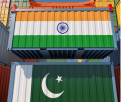 CommentariesNews
Ides of trade between India and Pakistan
CommentariesNews
Ides of trade between India and Pakistan
-
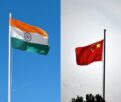 Commentaries
How sustainable is the rhetoric of India-China Bhai-Bhai
Commentaries
How sustainable is the rhetoric of India-China Bhai-Bhai
-
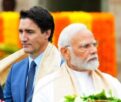 CommentariesTop Story
New Set of Diplomatic Strains with Canada
CommentariesTop Story
New Set of Diplomatic Strains with Canada
-
 News
Ratan Tata’s Legacy
News
Ratan Tata’s Legacy
-
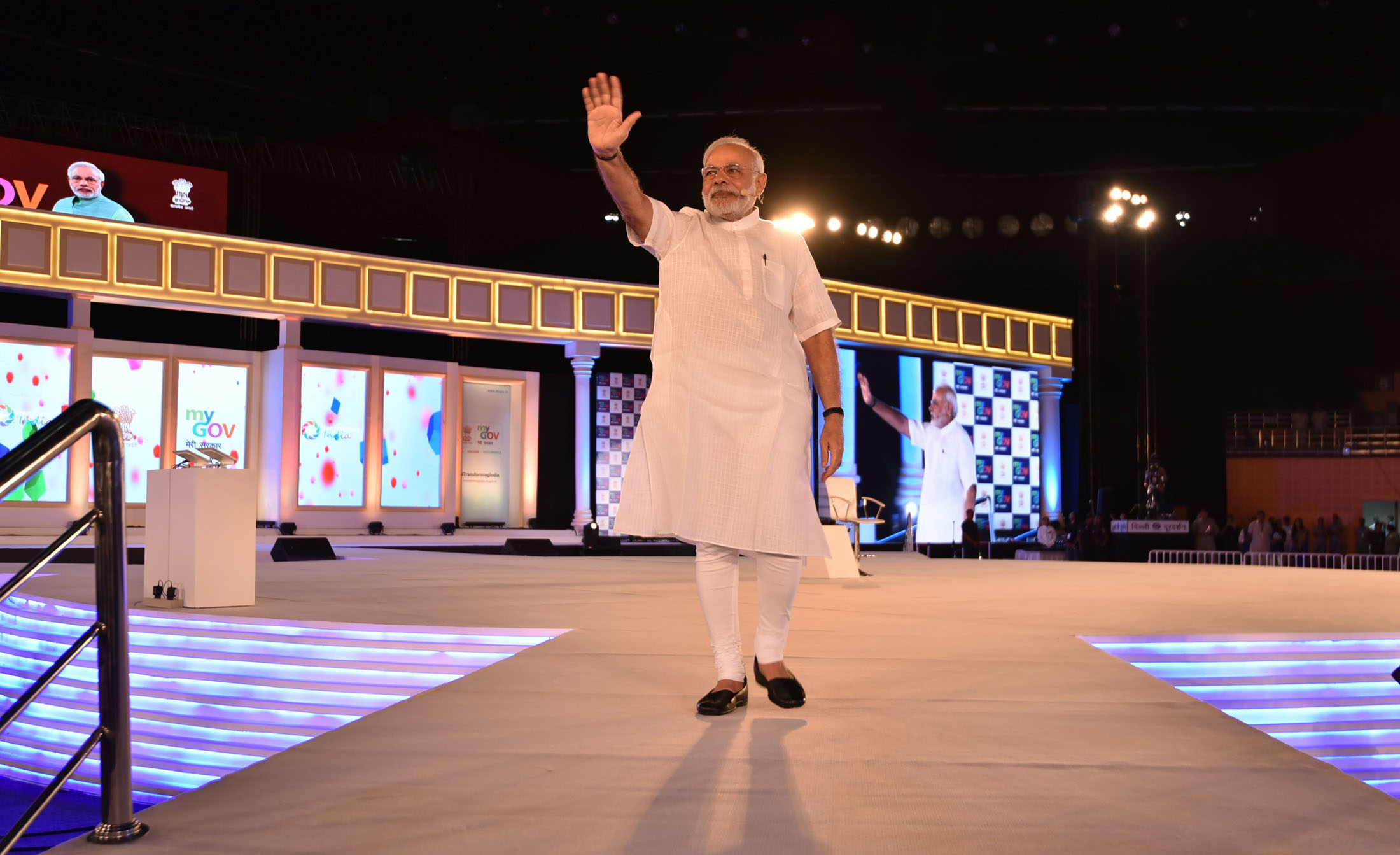 Commentaries
India’s Strategic Push on the World Stage
Commentaries
India’s Strategic Push on the World Stage
- Commentaries Veils of Resistance
- Commentaries Ensuring Safety for Women Healthcare Workers
-
 CommentariesTop Story
Palestinians at the cross- roads
CommentariesTop Story
Palestinians at the cross- roads
-
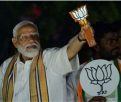 CommentariesTop Story
While Modi professes concern for the jobless, “his government’s budget escalates class war”
CommentariesTop Story
While Modi professes concern for the jobless, “his government’s budget escalates class war”
AdSense code




